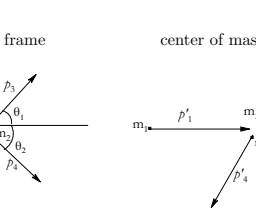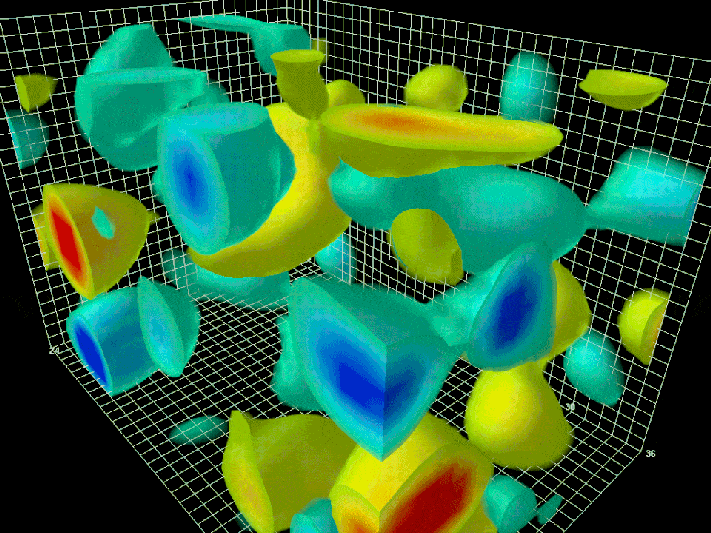MY-ASSIGNMENTEXPERT™可以为您提供my.uq.edu PHYS4040 Quantum field theory量子场论课程的代写代考和辅导服务!
这是昆士兰大学 量子场论课程的代写成功案例。

PHYS4040课程简介
Course Description: This course covers advanced topics from single-particle quantum mechanics, such as advanced quantum dynamics, path-integrals, and quantum decoherence. It will also cover introductory non-relativistic many-body quantum theory, relativistic quantum mechanics, and relativistic quantum field theory. We will look at selected applications from atom optics, condensed matter physics, and particle physics.
Assumed Background:
Students should have a sound understanding of quantum physics at the level of PHYS3040 (or equivalent). Background in special relativity (e.g. PHYS2100), electromagnetic fields (e.g. PHYS3051), condensed matter physics (e.g. PHYS2020) and statistical mechanics (e.g. PHYS3020) is strongly recommended.
Prerequisites
This course aims at a first introduction to relativistic quantum field theory. This plays a fundamental role in our understanding of particle physics but arises also in the study of statistical mechanics and second quantised condensed matter systems.
Course Changes in Response to Previous Student Feedback
The course has been modified to be more interactive, with more chance for students to work through problems with assistance.
PHYS4040 Quantum field theory HELP(EXAM HELP, ONLINE TUTOR)
For Grassmann variables $\xi$ and $\theta$, show that one has a Fourier transform pair
$$
\begin{aligned}
& g(\xi)=\int d \theta e^{i \xi \theta} f(\theta), \
& f(\theta)=i \int d \xi e^{-i \xi \theta} g(\xi) .
\end{aligned}
$$
I.e., using the first equation to define $g(\xi)$, show that the second equation is true.
Expand both $f(\theta)$ and $e^{i \xi \theta}$,
$$
\begin{aligned}
f(\theta) & =a+b \theta, \
e^{i \xi \theta} & =1+i \xi \theta,
\end{aligned}
$$
and do the first integral, remembering $\int d \theta \theta=1$,
$$
g(\xi)=\int d \theta(1-i \theta \xi)(a+b \theta)=\int d \theta(a+b \theta-i a \theta \xi)=b-i a \xi .
$$
Then
$$
f(\theta) \stackrel{?}{=} i \int d \xi(1-i \xi \theta)(b-i a \xi)=i \int d \xi(b-i a \xi-i b \xi \theta)=a+b \theta .
$$
Works!
Calculate the superficial degree of divergence in 4D for Yukawa theory, which is a theory of interacting fermions and scalars,
$$
\mathcal{L}=\mathcal{L}{0 \psi}+\mathcal{L}{0 \phi}-g \bar{\psi} \psi \phi .
$$
Look up the meaning of renormalizable, superrenormalizable, and non-renormalizable, and state which of these Yukawa theory is in 4D.
Let $P_f=$ number of internal fermion lines (fermion propagators) and $P_s=$ number of internal scalar lines. Then if $L$ is the number of independent loops, the superficial degree of divergence is
$$
D=4 L-P_f-2 P_s
$$
If $V$ is the number of vertices, the number in independent loops is the number of independent internal momenta, which is
$$
L=P_f+P_s-(V-1)
$$
Hence,
$$
D=4-4 V+3 P_f+2 P_s
$$
Noticing that each vertex has the ends of two fermion lines and the end of one scalar line,
$$
\begin{gathered}
2 V=2 P_f+N_f, \
V=2 P_s+N_s,
\end{gathered}
$$
where $N_f$ is the number of external fermion lines and $N_s$ is the number of external scalar lines. Using this to substitute for the number of propagators,
$$
D=4-4 V+3 V-\frac{3}{2} N_f+V-N_s,
$$
or
$$
D=4-\frac{3}{2} N_f-N_s
$$
Calculate the superficial degree of divergence for scalar electrodynamics (charged pions and photons) in $d$ dimensions, i.e., where the integrations are $d^d k$ and the propagators have the same powers of momentum as in $4 \mathrm{D}$. Show that in $4 \mathrm{D}$ that the superficial degree of divergence of a Feynman diagram depends only on the numbers of external legs.
(The Lagrangian is
$$
\begin{aligned}
\mathcal{L} & =\left[(\partial-i e A)\mu \phi\right]^(\partial-i e A)^\mu \phi-m^2 \phi^ \phi \
& =\mathcal{L}_0-i e \phi^\left(\vec{\partial}\mu-\overleftarrow{\partial}\mu\right) \phi A^\mu+e^2 \phi^ \phi A\mu A^\mu
\end{aligned}
$$
where the interaction terms give Feynman rules $-i e\left(p+p^{\prime}\right)\mu$ and $2 i e^2 g{\mu \nu}$, respectively.)
Noting a power of momentum at each vertex that has three lines entering,
$$
D=d L+V_3-2 P_\pi-2 P_\gamma .
$$
There are two types of vertices, with 3 lines entering or 4 lines entering, with numbers $V_3$ and $V_4$, and
$$
L=P_\pi+P_\gamma-\left(V_3+V_4-1\right)
$$
and
$$
D=d-(d-1) V_3-d V_4+2 P_\pi+2 P_\gamma
$$
Further,
$$
\begin{aligned}
2 V_3+2 V_4 & =2 P_\pi+N_\pi, \
V_3+2 V_4 & =2 P_\gamma+N_\gamma .
\end{aligned}
$$
Hence,
$$
D=d-(d-1) V_3-d V_4+2 V_3+2 V_4-N_\pi+V_3+2 V_4-N_\gamma,
$$
or
$$
D=d-(d-4) V_3-(d-4) V_4-N_\pi-N_\gamma
$$
In four dimensions this is $D=4-N_\pi-N_\gamma$.

MY-ASSIGNMENTEXPERT™可以为您提供MY.UQ.EDU PHYS4040 QUANTUM FIELD THEORY量子场论课程的代写代考和辅导服务!





